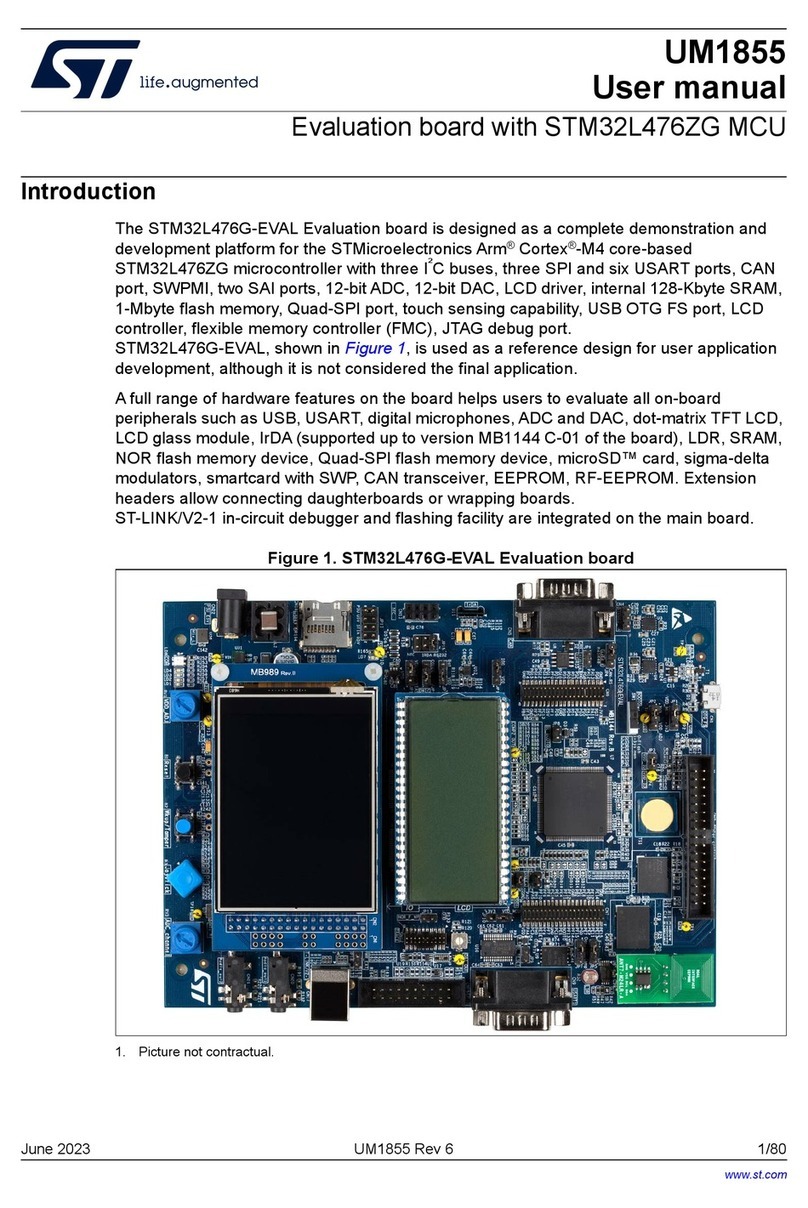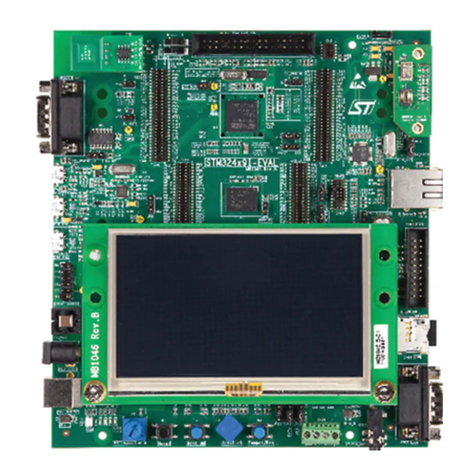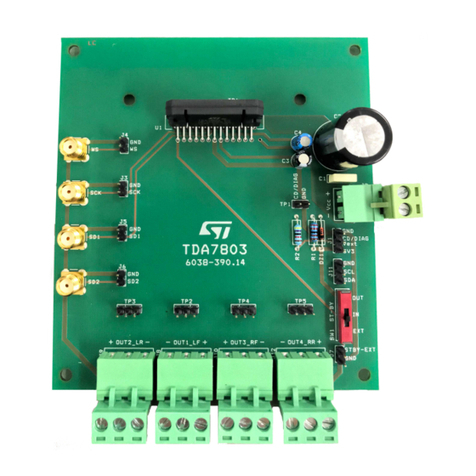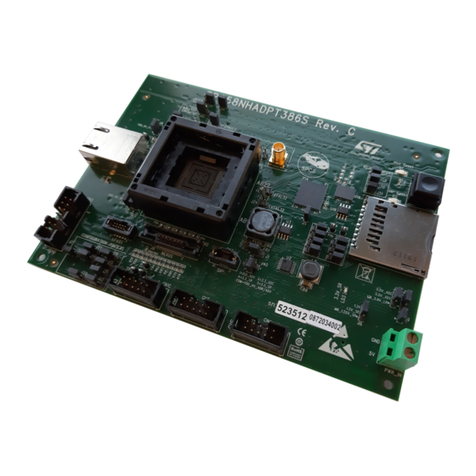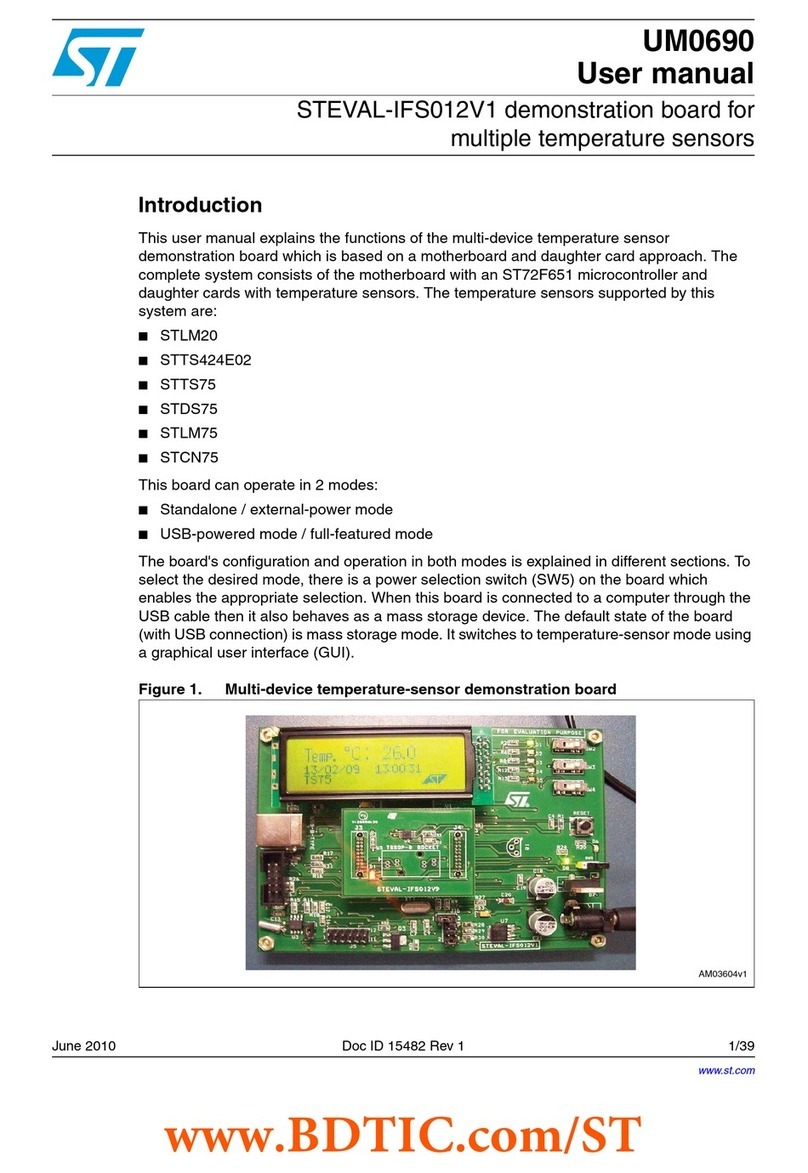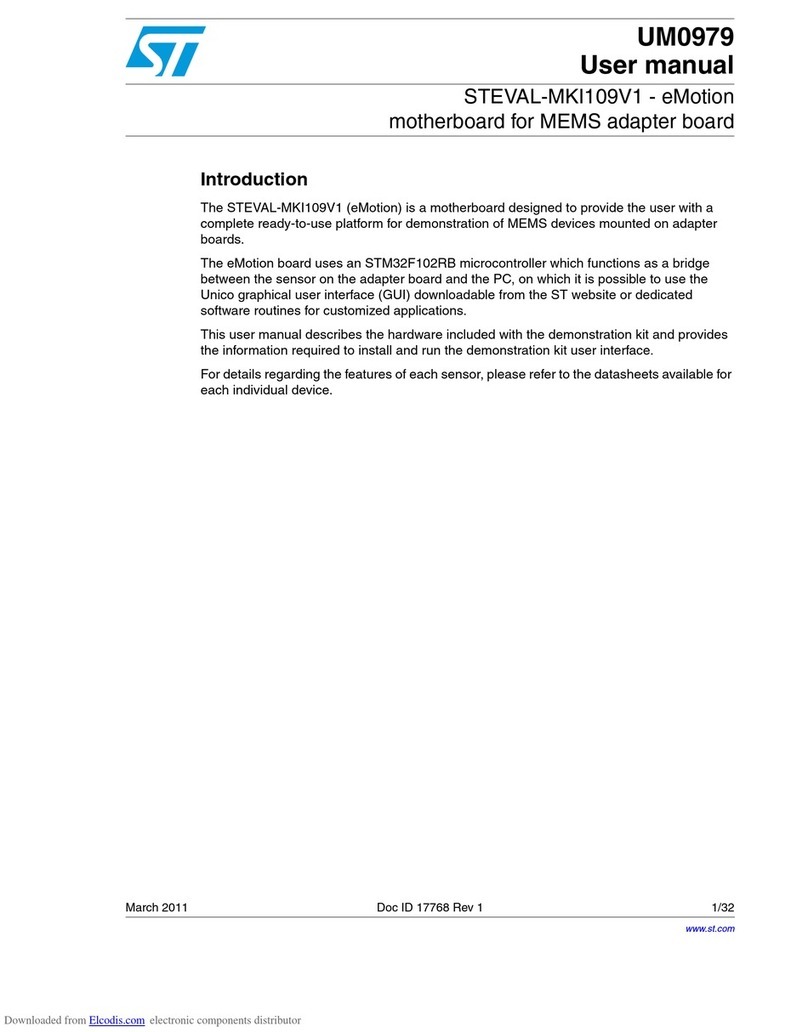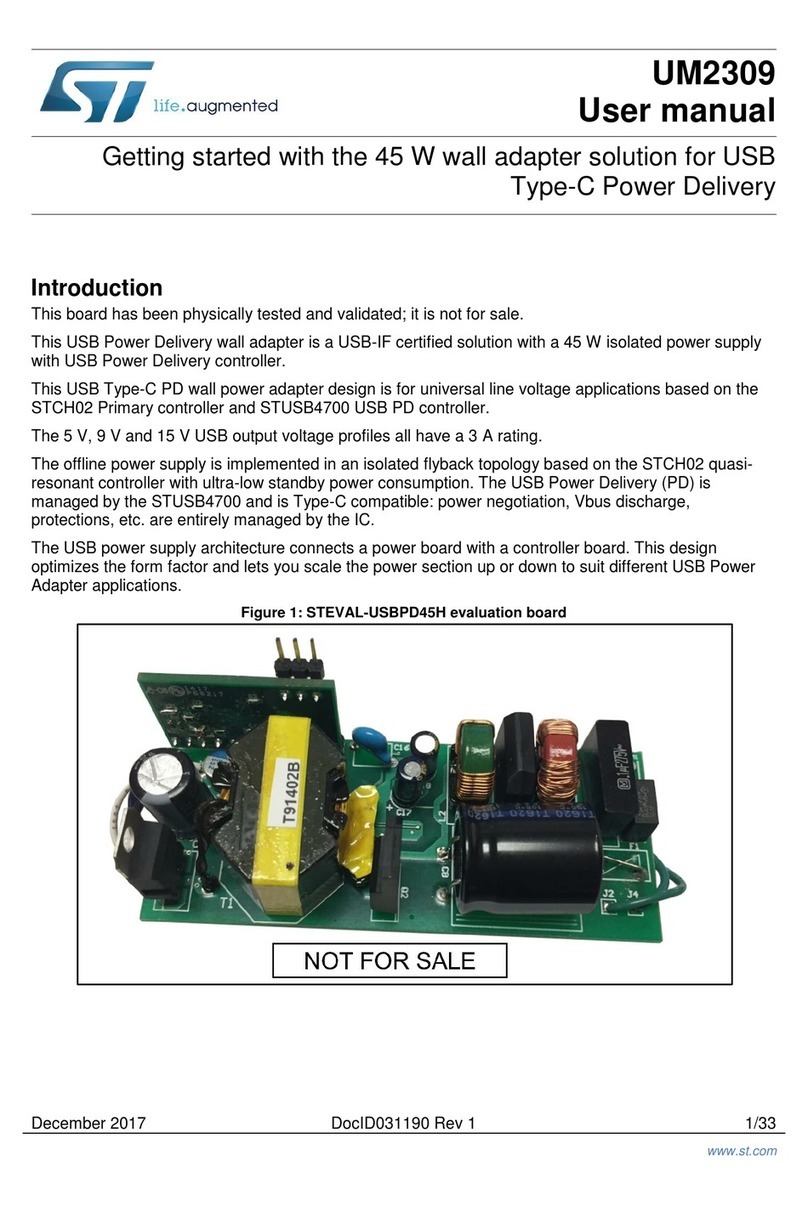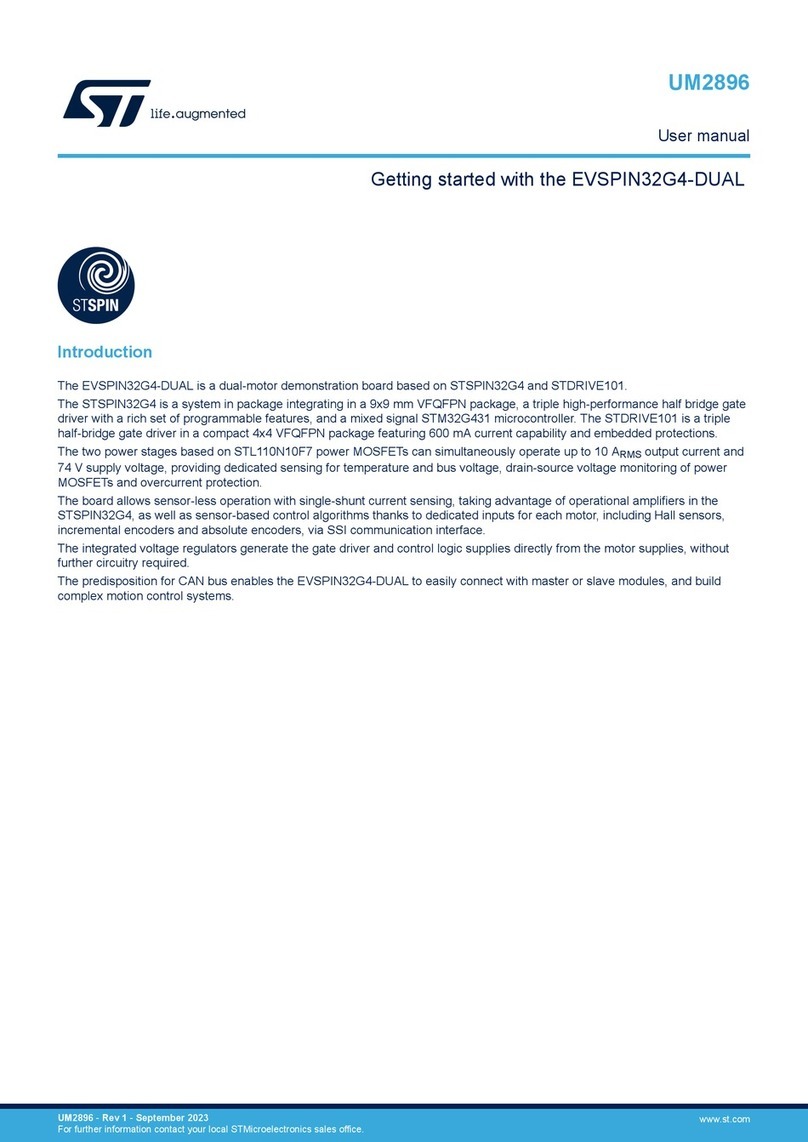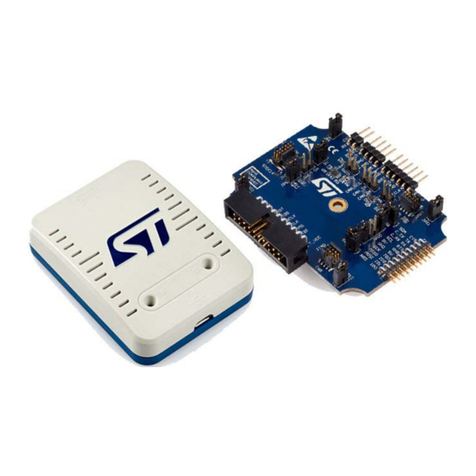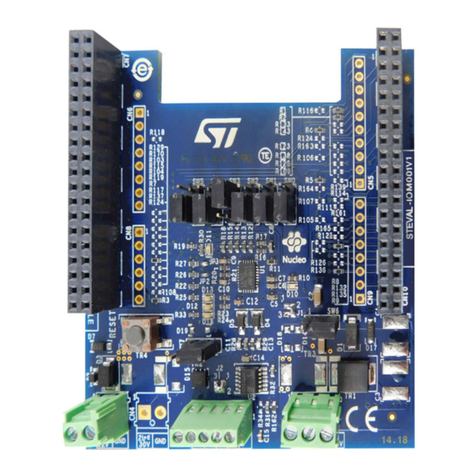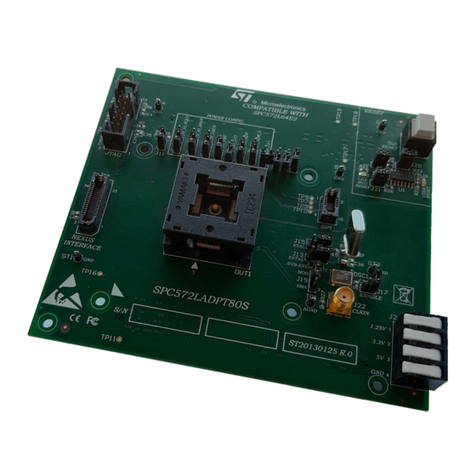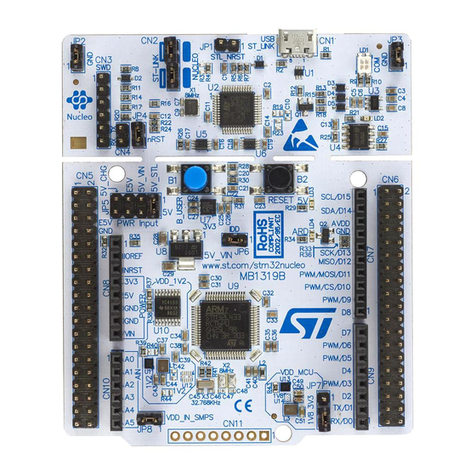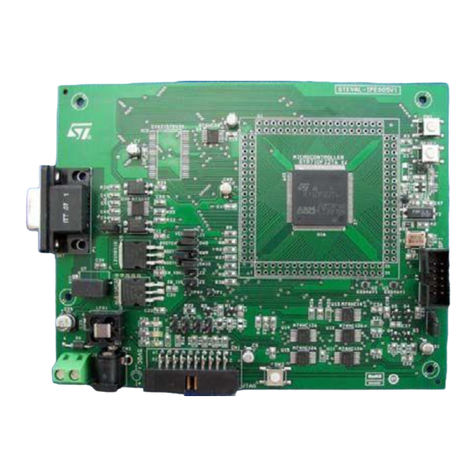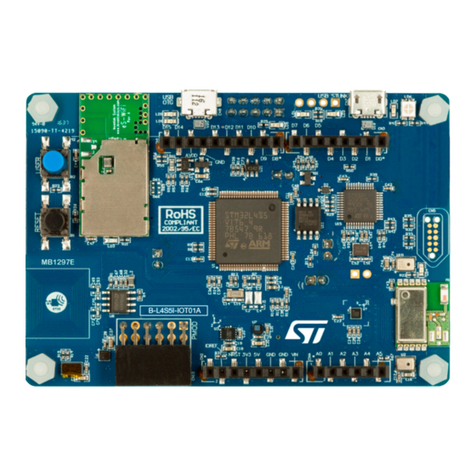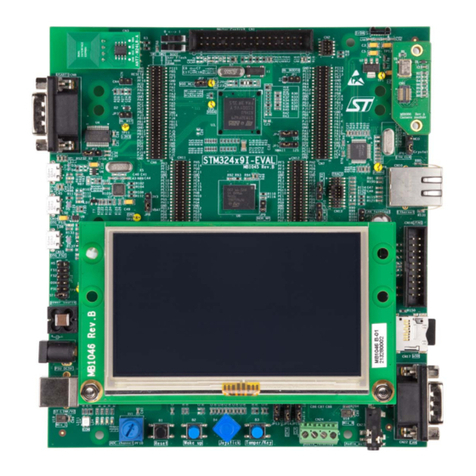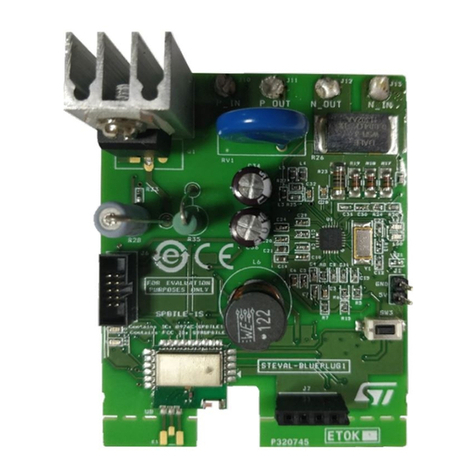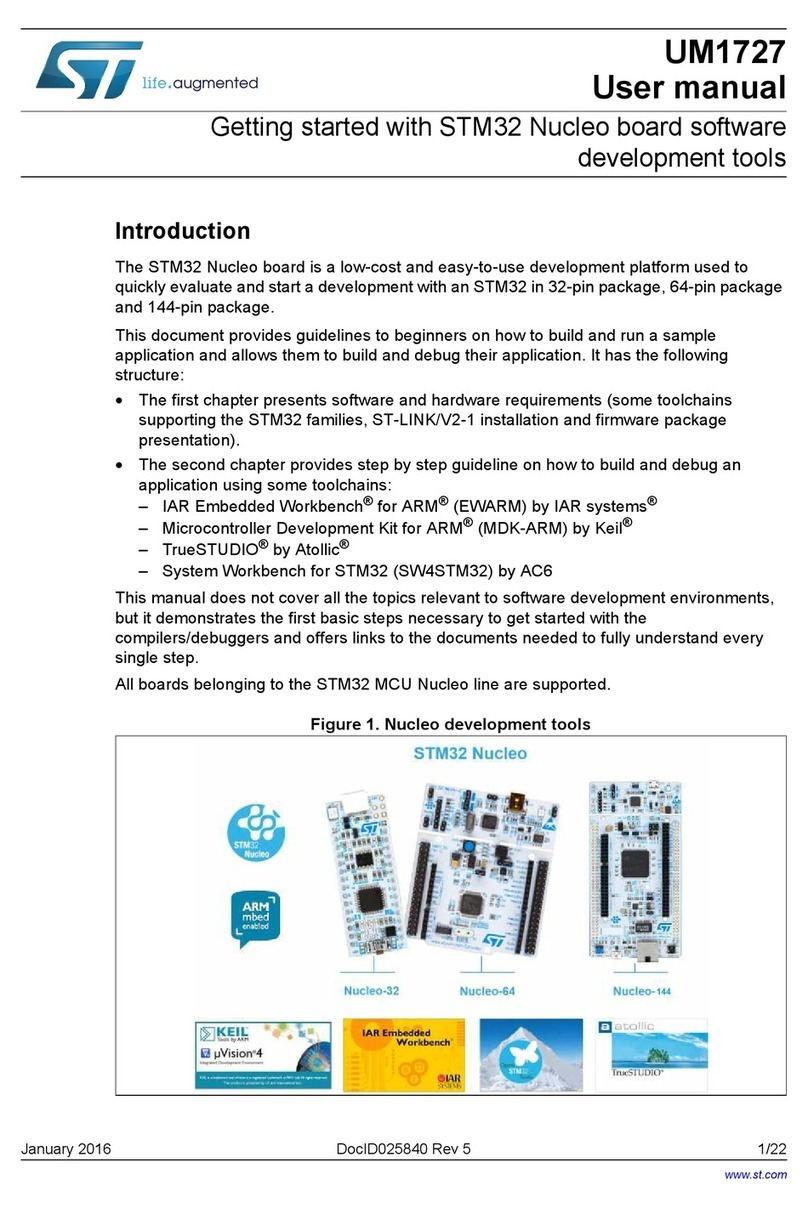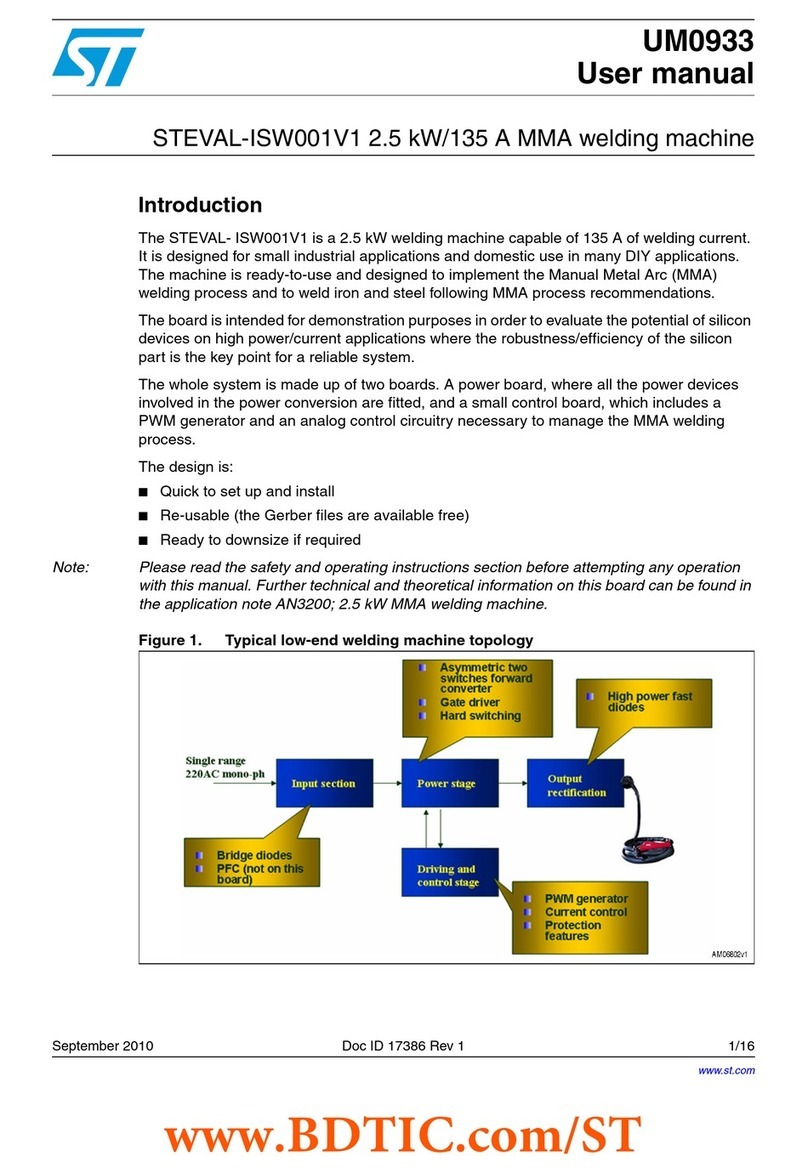
Contents UM2408
2/45 UM2408 Rev 1
Contents
1 Features . . . . . . . . . . . . . . . . . . . . . . . . . . . . . . . . . . . . . . . . . . . . . . . . . . . 6
2 Ordering information . . . . . . . . . . . . . . . . . . . . . . . . . . . . . . . . . . . . . . . . 7
2.1 Product marking . . . . . . . . . . . . . . . . . . . . . . . . . . . . . . . . . . . . . . . . . . . . . 7
2.2 Codification . . . . . . . . . . . . . . . . . . . . . . . . . . . . . . . . . . . . . . . . . . . . . . . . . 7
3 Development environment . . . . . . . . . . . . . . . . . . . . . . . . . . . . . . . . . . . . 9
3.1 Development toolchains . . . . . . . . . . . . . . . . . . . . . . . . . . . . . . . . . . . . . . . 9
3.2 System requirements . . . . . . . . . . . . . . . . . . . . . . . . . . . . . . . . . . . . . . . . . 9
3.3 Demonstration software . . . . . . . . . . . . . . . . . . . . . . . . . . . . . . . . . . . . . . . 9
4 Conventions . . . . . . . . . . . . . . . . . . . . . . . . . . . . . . . . . . . . . . . . . . . . . . 10
5 Quick start . . . . . . . . . . . . . . . . . . . . . . . . . . . . . . . . . . . . . . . . . . . . . . . . 11
5.1 Getting started . . . . . . . . . . . . . . . . . . . . . . . . . . . . . . . . . . . . . . . . . . . . . .11
6 Hardware layout and configuration . . . . . . . . . . . . . . . . . . . . . . . . . . . . 12
6.1 Nucleo-144 board layout . . . . . . . . . . . . . . . . . . . . . . . . . . . . . . . . . . . . . 13
6.2 Mechanical drawing . . . . . . . . . . . . . . . . . . . . . . . . . . . . . . . . . . . . . . . . . 14
6.3 Program and Debug the on-board STM32H7 target . . . . . . . . . . . . . . . . 16
6.3.1 Using the ST-LINK/V3 to program and debug the on-board STM32H7 . 16
6.3.2 Using an external debug tool to program and debug the on-board
STM32H7 . . . . . . . . . . . . . . . . . . . . . . . . . . . . . . . . . . . . . . . . . . . . . . . . 17
6.4 Power supply and power selection . . . . . . . . . . . . . . . . . . . . . . . . . . . . . . 18
6.4.1 Power supply input from ST-LINK/V3 USB connector (default setting) . 18
6.4.2 External power supply input from VIN (7-11 V, 800 mA max) . . . . . . . . . 19
6.4.3 External power supply input 5V_EXT (5 V, 500 mA max) . . . . . . . . . . . 20
6.4.4 External power supply input from USB CHARGER (5V) . . . . . . . . . . . . 21
6.4.5 External power supply input from 3V3_EXT (3.3 V) . . . . . . . . . . . . . . . 21
6.4.6 Debugging while using VIN or EXT as an external power supply . . . . . 22
6.4.7 External power supply output . . . . . . . . . . . . . . . . . . . . . . . . . . . . . . . . 23
6.4.8 Internal SMPS / LDO Configuration . . . . . . . . . . . . . . . . . . . . . . . . . . . . 23
6.4.9 JP5: 1.8 V / 3.3 V selection . . . . . . . . . . . . . . . . . . . . . . . . . . . . . . . . . . 25
6.5 External SMPS selection . . . . . . . . . . . . . . . . . . . . . . . . . . . . . . . . . . . . . 25
